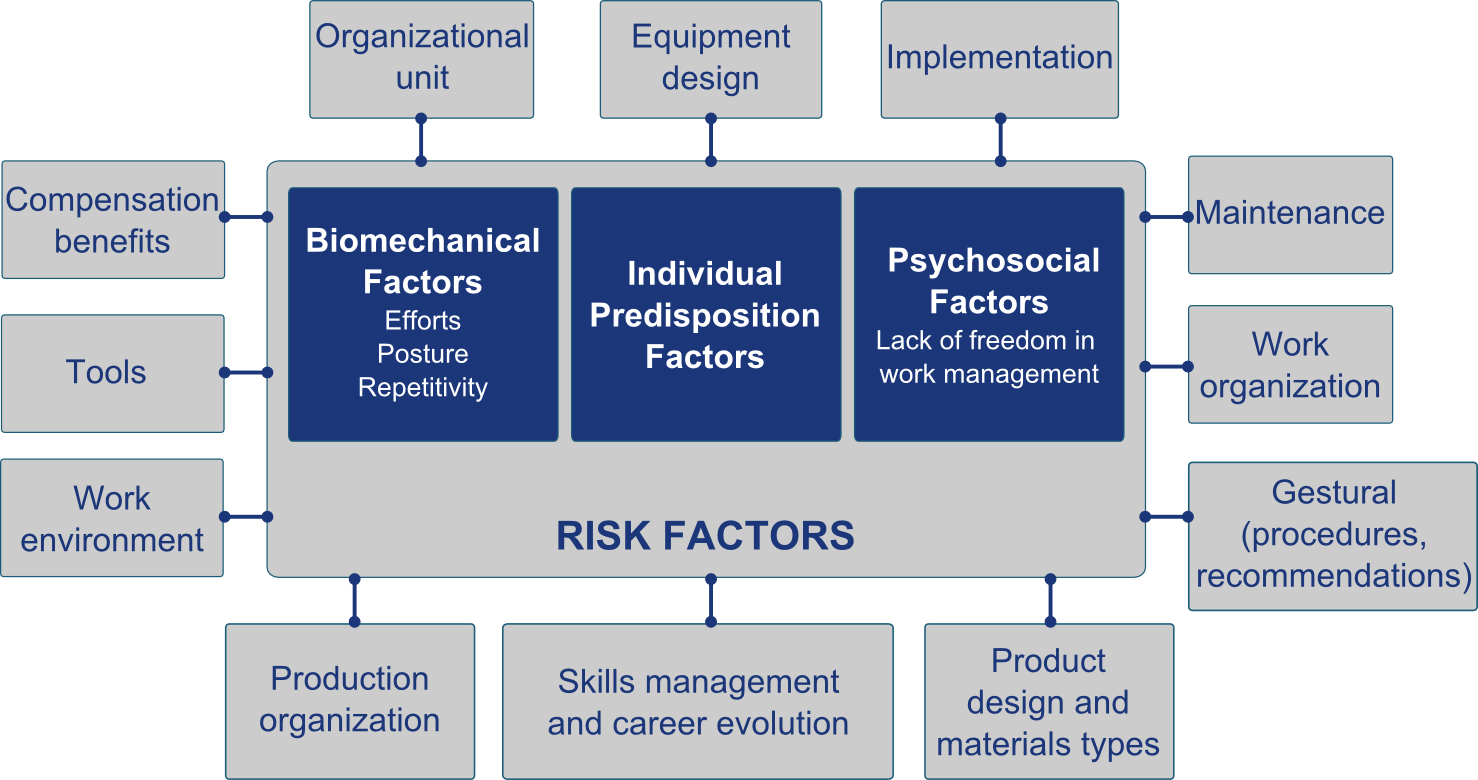Several factors can be related to the occurrence of musculoskeletal disorders. Indeed, the evidenced knowledge from epidemiological studies in ergonomics has shown a strong and consistent relationship between the musculoskeletal disorders and various factors of occupational exposure such as intense efforts, repetitive movements, static muscle load for long periods of time, unfavorable positions, absence of rest periods, located mechanical stress, segmental exposure or whole body vibrations, as well as the misalignment of the organizational structures to the labor involvement.

The psychosocial factors have recently become one of the main interest matters for many researchers, which claim their explanation vision for the work-related musculoskeletal disorders. These factors represent “the subjective perceptions of the workers over organizational factors, which are objective aspects of how the work is organized, how it is monitored and how it is accomplished”. The stress occurs when the worker is not able to respond to the work demands that may bring adverse effects to health and to the development and/or persistence of the musculoskeletal disorders. Thus, the monotonous work, high workload, the time constraints and the lack of control over work are associated with musculoskeletal upper limb and spine (Bongers et al., 1993; Bernard, 1997).
However, the role taken by the force, the repetitiveness and the posture are well known, and most authors agree that there are biomechanical risk factors that must be considered as priority in the prevention of musculoskeletal disorders (Westgaard & Winkel, 1997). In fact, since the 80's, the emphasis on the epidemiology in ergonomics has been placed over the physical factors.